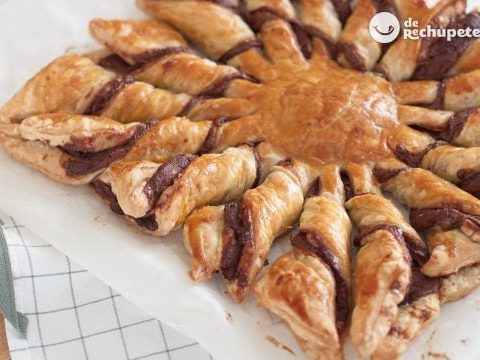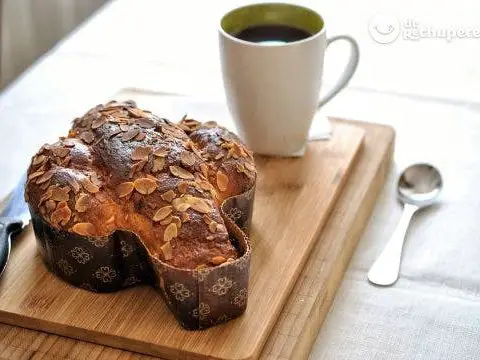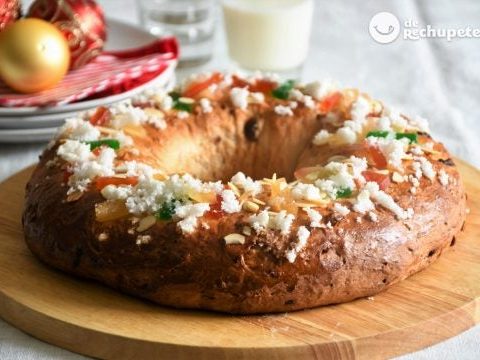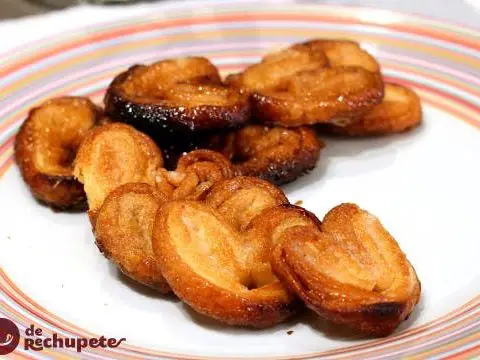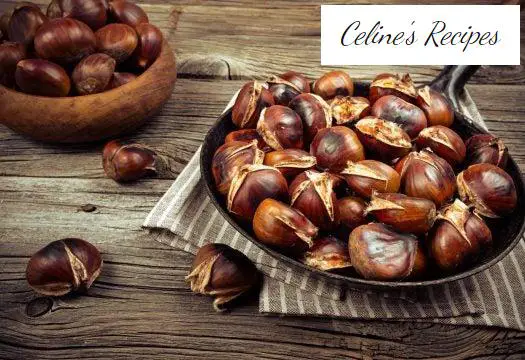
Info.
- 30 minutes
- For 4 people
- 0.8 € / person
- 230kcal per 100g.
- · ·
How to roast chestnuts at home .
Today we are going to explain how to roast chestnuts like a true professional, with all the luxury of details and advice so that they fit perfectly.
After 30 years preparing Magostos several times a year in chestnut season, today I have put everything in this post so that you prepare them just like me.
A perfect way to not be afraid when preparing chestnuts in the fire, oven or microwave .
Although the most traditional and coolest method is fire or carón da lumbre ou lareira. Well, that involves a lot of things, partying, reunion and gathering at a stake with your friends and family.
It is perhaps the worst option if you are going to make chestnuts , because you have to be very careful that they are done correctly and without burning.
I think the best way to roast chestnuts is the conventional oven, without smoke and without effort, where the best results are achieved. And as a last, the microwave option, for those who go through life in a hurry, which in the absence of the previous ones, is a slightly flatter way of roasting, but that can be worth it in a moment of despair.
The roasted chestnuts at home can be a dessert or a tabletop type deserving perfect in November and December, even at Christmas.
In addition, if we have leftovers we can keep them for a few days in the fridge in an airtight container, even to add them to salads or other types of dishes. They are delicious as a base for creams, purees, stews or desserts. On the blog you have a multitude of recipes.
I leave you with my tips for roasting chestnuts without complicating life, in an easy way, so simple that the little ones at home can help you.
The first. Choosing chestnuts well
- If you are not that lucky, shopping is easy, you just have to choose those chestnuts with good color, if possible a bright brown and without spots.
- Choose those that are large and heavy. Those with cuts to discard, because as they come in hedgehogs full of tips, the hoe is usually used to open them and sometimes they are broken or cut.
- Try to choose the chestnuts of the same size, the reason is that if we are going to roast them, having the same size they will be made equally. If they are of various calibres, some of them will be raw, the largest and the smallest very made.
- Very important that they are not pierced because that means they have a bug, you could eat a lot of protein. The flatter ones are also advisable to leave, as they are usually difficult to peel and have little chicha to eat.
- The first thing we have to do before roasting the chestnuts is to wash and dry them well. Then give them a deep cut that goes through both skins. Here for purists, it would be a cross in the middle of the chestnut. Although at home we do not complicate life and we do it on the side. Just enough to see the interior, that it is white and without bugs. The cut must be clean and it is highly recommended to let the chestnut breathe when roasting.
- Once chosen, we only have to choose the way of preparation. I recommend the following 3.
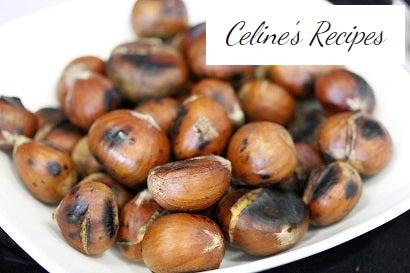
Roast chestnuts at home in the oven
- The oven is another classic for roasting chestnuts at home. It is my preferred option because you can make a lot of quantity, since at home they never exceed.
- My first advice is that the oven must be preheated previously, we preheat it to 200º C for 10 minutes.
- Place the chestnuts with heat up and down, with air (if you have) in the tray in the lowest part of it at 200º C. If you have a lot, you can always bake more than one tray at a time, nothing happens. You just have to increase the baking time a little.
- The time varies by the type of chestnut and its size. For a medium chestnut and with a normal humidity point (some are already very dry on the market), with 10 minutes on one side and another 10 minutes turning them around is enough.
- You will find some grandmother’s advice out there, from leaving them for a few hours in brine, to intensify the flavor, to giving it a touch of a frying pan to toast and giving this burned tone to the skin. Although if they are chestnuts like those that my father picks me up in the Ribeira Sacra, I assure you that it is not necessary.
In short : it is the most comfortable and decisive way. The only thing is that it lacks the smoky touch that logically gives the fire. Once roasted and still hot you can give it a touch of fine salt, and be careful not to burn your hands when peeling them. Do not let them cool too much as they will be more difficult to peel.
 Roasting chestnuts at home in a pan
Roasting chestnuts at home in a pan
- If you have a gas stove at home, you can roast chestnuts in the traditional frying pan for this matter. It is a special frying pan that they sell in any hardware store or household goods store and that has a particularity, it is full of holes.
- Chestnut frying pans are designed to make chestnuts at home, nuts or ears of corn. It is an iron pan with holes in the bottom that allows the chestnuts to roast in contact with the flames. Although it depends on the diameter and gas stove, more or less chestnuts fit. Usually the roast chestnut batches are small.
- We place the chestnuts in the pan without covering and over high heat until we see that they are being made. We give it a wiggle every once in a while so that they turn and do everywhere. In this way we will also avoid being burned on the outside while still raw on the inside.
- The normal thing is to do them for half an hour, depending on the size, but go try some to get the right point.
- Finally we cover the pan with a cotton cloth with the fire turned off. This will make them easier to peel.
- If you have a ceramic hob or induction cooker, the shape is similar but with the oldest frying pan and we have the most anger. Well, we’re going to spoil it. There is no need for the holes, since it will be the direct contact with the surface of the pan that will make them roast. Times change, in vitro it will be more than half an hour and in induction less. It is best to use the lid so that the temperature accumulates and moisture does not evaporate. The times are depending on the power of the plate.
Summary : Chestnuts and fire get along very well. But we must be aware at all times of stirring the chestnuts in the pan and the amount will always be low, because you can not do much.
Roast chestnuts in the microwave
- It is the practical, fast and above all, clean method. It is not the best when it comes to tasting the roasted chestnut, because we are going to eat a chestnut between cooked and roasted. But it is a perfect way to have the chestnuts clean before another recipe where we are going to use the chestnut.
- The other difference with the other two preparations is that you can only make a small handful, because unless you have a giant microwave, there are very few.
- It can also damage the microwave if the chestnuts are very humid, since a lot of steam is released when they are cooked.
- The previous process is the same as the previous ones: wash, dry and cut small in the chestnuts. We place in a microwave-safe container, and with a lid, I usually make them in a Lekue mold that I always use in the micro, and we have them for 6-8 minutes at 800 W.
- In this case more than ever it is important to peel them very hot because otherwise they will give us many problems.
Summary: It is the quick option for when you have a craving for chestnuts and you are alone or for when you need a few peeled chestnuts for another preparation.
How to cook chestnuts
- To cook the chestnuts the first thing like the previous ones for roasting, is to wash, dry and a small cut in the chestnuts with the knife.
- Then in a large saucepan full of water, cook the chestnuts in water for 30 to 45 minutes from when it begins to boil. The highest temperature in your kitchen. The times depend on the size of the chestnuts, the smaller, less time, the larger, the longer.
- It is important to try some to not pass us, we do not want problems to peel the chestnuts, nor mash before doing it.
- Then we take them out and let them rest in a strainer. We let them cool just enough so as not to burn our fingers and peel them with the knife, removing the inner skin well, since its flavor is bitter.
- They can also be made in a pressure cooker, the process will be much faster. You should cook them no more than 3 minutes on the fire.
A grandmother’s tip is to add a little salt, a little more, if you’re going for a salty recipe.
The point of salt helps to intensify flavors and the sweet also does very well. If they are chestnuts for an exclusively sweet preparation, you can add 2 tablespoons of sugar and a few grains of anise to the water.
If we are going to use them for a puree or cream, you can add a little milk to the water, they tend to be creamier.
With all this information you can only enjoy such a precious fruit with any of the recipes that we have on the blog.
You can always make a chestnut cream , sweet or not, it is perfect to accompany many recipes. How to fill, puree or just spread on toast.
Chestnut recipes
- In the sweet section of Rechupete Recipes you will find the famous Magostos cake , a chestnut bica that is so fashionable in Galicia, the chestnut cake that my grandmother Lucrecia made or the cheese and chestnut cake of my friend Amorín.
- Even a very popular and highly successful blog option, the chocolate chestnut pie .
- You will also find desserts with chestnuts in other formats that are just as good, as a base for a flan , in custard or perfect as a filling for a gypsy arm .
- Roasted, cooked, dried, in puree or cream, in syrup or as you get more angry, eating chestnuts is always a pleasure.
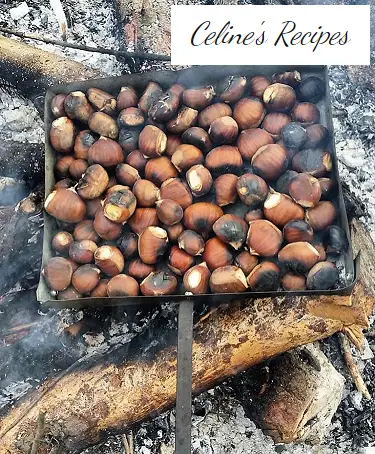
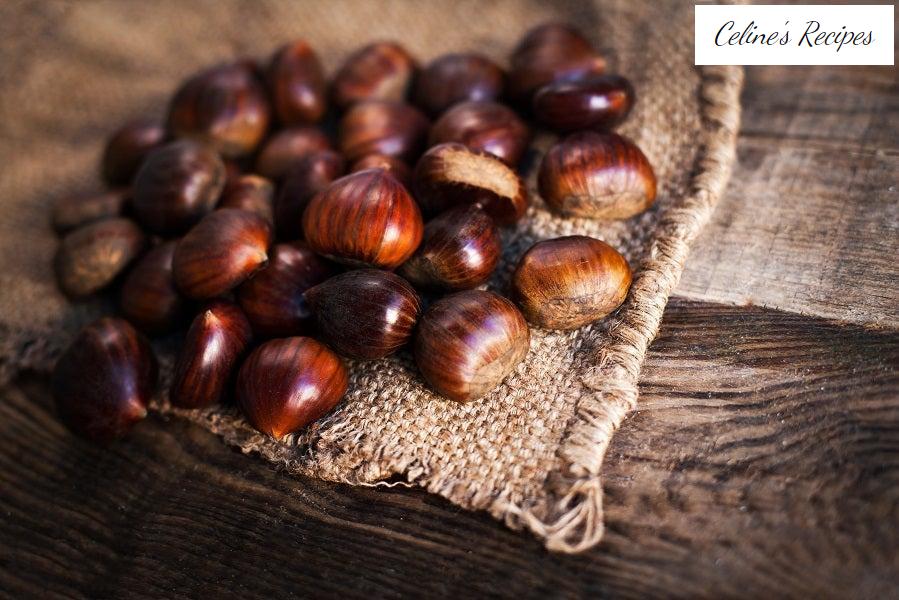
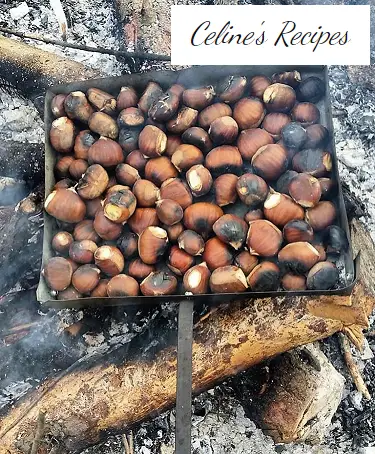 Roasting chestnuts at home in a pan
Roasting chestnuts at home in a pan